Nikon D5000 Digital SLR Review
Nikon D5000 Digital SLR Review
The D5000 is Nikon’s new advanced consumer DSLR, and it’s loaded with features.
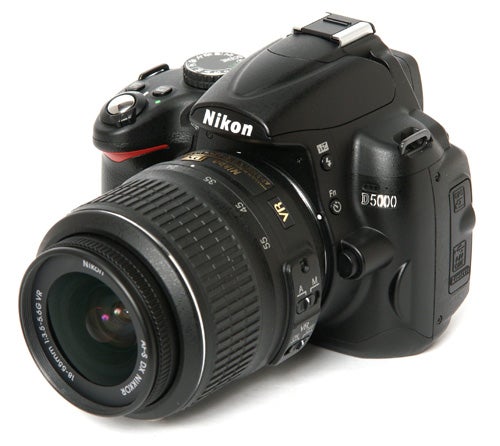
Sections
- Page 1 Nikon D5000 Digital SLR Review
- Page 2 Nikon D5000 Digital SLR Review
- Page 3 Nikon D5000 Digital SLR Review
- Page 4 Nikon D5000 Digital SLR Review
- Page 5 Features Table Review
- Page 6 Test Shots – ISO Performance Review
- Page 7 Test Shots – Detail and Lens Performance Review
- Page 8 Test Shots – Exposure Evaluation Review
Verdict
Key Specifications
- Review Price: £490.00
Digital SLRs have become very popular over the past few years, thanks to the ready availability and comparatively low cost of good quality entry-level models. It’s possible to get a decent DSLR with a standard zoom lens for under £300, less than the cost of some compact cameras. However these entry-level models are often quite limited, with only basic features and controls more like those of a compact.
As a result there are a lot of keen photographers out there who are starting to find their beginner’s models a bit restrictive, and are looking to upgrade to something offering more versatility and control. The price level between £450 and £550 is hotly contested territory, with cameras like the Canon EOS 500D (review coming soon), the Olympus E-620 and the new Sony Alpha A380. Against this opposition Nikon has launched the D5000, a new mid-range 12.3-megapixel DSLR loaded up with every must-have feature that the camera industry has apparently decided we can’t live without.

The D5000 fits into Nikon’s range above the new entry-level D3000, but below the £630 D90. It manages to combine most of the D90’s features into the lighter body it shares with the D3000, adding a flip-and-twist articulated 2.7-inch monitor. Although the body feels a lot smaller than the D90 there’s actually not much in it. The D5000 is slightly narrower but a couple of millimetres taller and deeper. The body is strong plastic over a metal chassis, and the build quality and finish are of Nikon’s usual high standard. It feels light but robust, and is a comfortable camera to hold. The right-hand side controls are sensibly placed, and in common with most Nikon DSLRs there is a row of buttons on the left of the monitor.
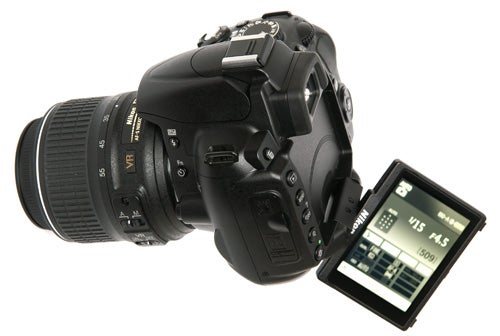
The D5000’s flip-and-twist monitor is somewhat unusual. The hinge and pivot is at the bottom, and so the screen hinges downwards. It can be rotated so that it points forward underneath the camera, or twisted right around to protect it against the camera body. Somebody didn’t think their cunning plan all the way through though, because with the camera mounted on a typical SLR-sized tripod – one time when a tilting live view monitor is particularly useful – the monitor hinge fouls the tripod mounting plate, and can’t be tilted down by more than 90 degrees, which obviously limits its usefulness in this situation. A side-mounted hinge would have been a lot more flexible, but that would have meant a re-think of Nikon’s traditional control layout.
If we can ignore that one annoyance the D5000 is otherwise a very capable and well designed camera, striking a careful balance between complexity and accessibility. The automatic settings such as the many scene modes and the superb AF system can be relied upon to produce good results in almost all circumstances, but for more experienced users it offers a wide range of manual control and custom setting options. It scores a perfect bulls-eye on its target user, combining the simplicity of an entry-level camera with the features of an advanced semi-pro model.
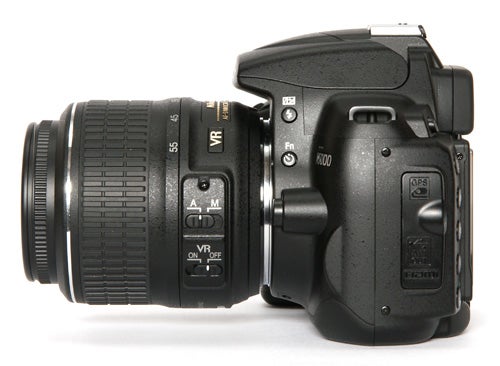
The hardware is all good quality too. The monitor is a little bit small for a DSLR at 2.7 inches and only 230k dots, but the viewfinder is larger and brighter than most of its rivals, with a good data display and an optional grid overlay. The shutter is rated for 100,000 cycles, and has a maximum speed of 1/4000th of a second, and the pop-up flash is decently powerful, with a guide number of 17 at 200 ISO. The D5000 uses the same Multi-CAM 1000 autofocus system as the D90, with 11 focus points including one centre cross-type sensor, and rather than relying on the flash it has a powerful AF assist lamp with a range of several meters.
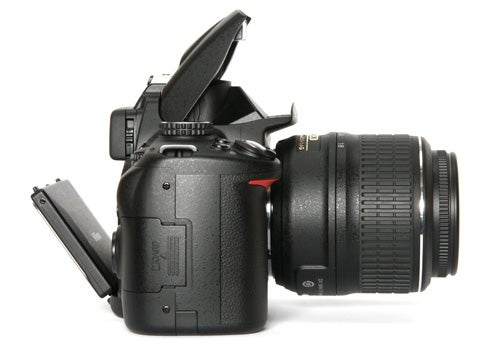
Like most of its rivals the D5000 is limited to a contrast detection AF system in live view mode, with a single focus point, although this point can be moved around the frame. This is considerably slower than the viewfinder phase detection AF, and even slower in low light, but it does mean that the D5000 can operate virtually silently shooting in live view with the mirror up.
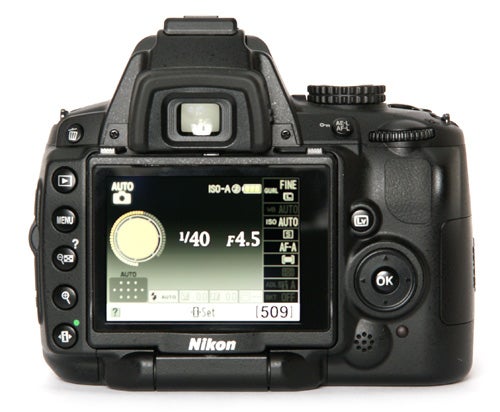
The video mode is also the same as the D90, shooting at up 1280 x 720 resolution at a TV-friendly 24fps. Sound is monaural only, recorded by an on-board microphone which is not particularly directional, recording sounds behind the camera as almost as loudly those from in front. It also has the same major drawback as the D90; there is no autofocus while recording, so you have to pre-focus and then try and keep your subject in focus manually, which is obviously difficult if you’re shooting hand-held and trying to follow a moving subject.
The D5000 has Nikon’s excellent Active D-Lighting dynamic range booster, which now has four levels of compensation, as well as automatic and off modes. It’s a very good system, flattening out the contrast curve to boost shadow detail and subtly dim highlights to avoid burning out. You only really notice the effect in very high contrast situations, but it does work well, with no detectable negative impact on image quality even at the highest setting.
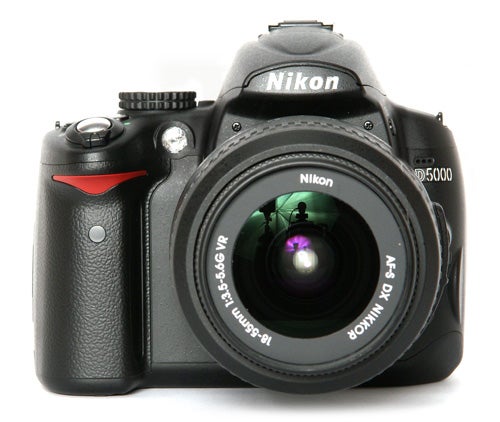
In order to control the camera’s considerable versatility the D500 has a dual menu system. The main shooting settings are displayed on the monitor along with basic exposure information, a match-needle meter and a graphic representation of the selected aperture. However to change any settings, such as drive mode or ISO sensitivity, you have to press the bottom left button to bring up the settings display, navigate to and adjust the setting with the D-pad, then press OK to confirm. It’s quite a fiddly operation and requires two hands. Other similar control systems on rival camera are a lot more slick and easy to use. Fortunately the main menu is a lot better though out, and includes a very handy “recent settings” page that allows you to quickly undo any changes, and an extensive custom settings menu.
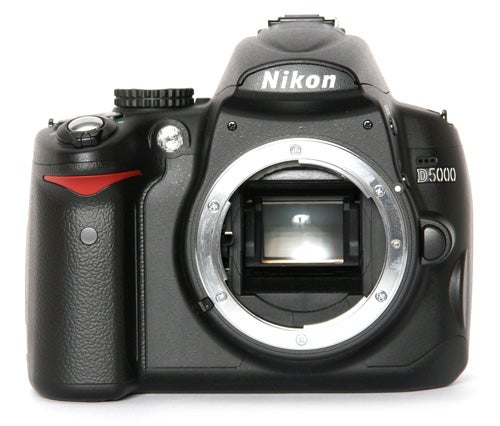
There is also an extensive retouch menu, including D-Lighting adjustment, red-eye correction, cropping, rotation, distortion correction, perspective adjustment, a variety of colour balance and filter effects. There is also a useful in-camera Raw processing option, as well as multi-image overlay and stop-motion animation. It’s almost as much fun playing with the retouch menu as it is taking pictures with the camera.
It’s the D5000’s performance that really sets it apart from the entry level toys. It starts up almost instantly, and like all the best cameras it can take a picture within a fraction of a second of flicking the switch. In single-shot mode it can take pictures as fast as you can press the shutter button. In continuous shooting mode it can manage over 4fps in JPEG Fine mode, although it does start to slow down after approximately 30 shots. In Raw mode it’s a fraction slower, and the buffer fills up after approximately 14 shots. The speed with which it empties again is very dependent on the speed of the memory card being used, although it doesn’t appear to see class 10 cards as any faster than class 6.
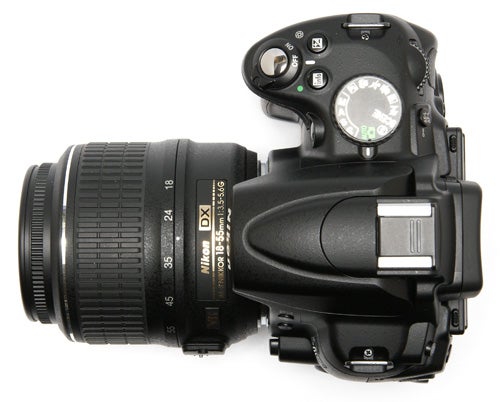
The movie quality is very good, and there’s no doubt that shooting video through a high quality Nikon lens does produce some very nice results, but the hit-or-miss sound quality and lack of autofocus limit its usefulness.
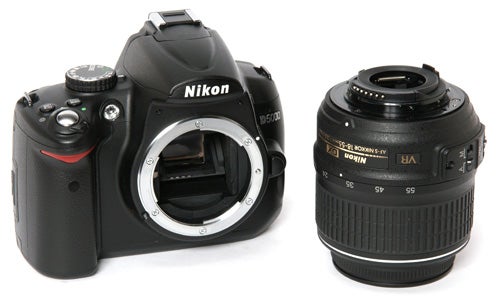
A number of reviewers have raved about the D5000’s image quality, but to be honest I wasn’t overly impressed by it. Don’t get me wrong, there’s no problem, it’s just not significantly better than any other mid-level APS-C DSLR that I’ve tried recently, such as the Sony Alpha A330 or even the Olympus Pen E-P1. The D5000 can certainly take a nice photo, and there’s no doubt that the new AF-S 18-55mm f/3.5-5.6G lens is utterly fantastic, producing corner-to-corner sharpness with no distortion or chromatic aberration at any focal length.
The Active D-Lighting system is excellent, effectively increasing the dynamic range by about one stop under and two over, and it wasn’t at all bad to start with. As a result the D5000 produces pictures with rich well-saturated colours that still have detail even in the brightest areas. In fact they look a lot like they were shot on colour slide film.
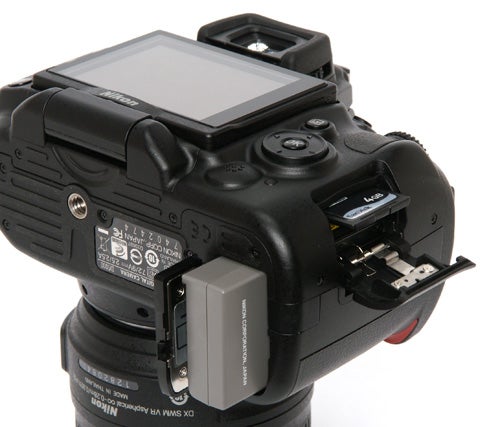
The only real problems I found with the D5000 were somewhat inconsistent light metering, varying by as much as 1EV on consecutive shots of the same scene, and significant noise at ISO settings of 800 and above, at least when using the default settings. High ISO nose control is adjustable via the main menu, but to get anything approaching acceptable image quality at 1600 ISO it has to set to maximum. 3200 ISO is pretty rope even so.
”’Verdict”’
The Nikon D5000 is a well made and well equipped mid-level camera ideal for those upgrading from an entry-level DSLR and looking for more features. Performance and handling are excellent, autofocus is quick and reliable, and image quality is very good under most circumstances. Video mode has no AF and the monitor opens the wrong way, but other than that it’s a good little camera.
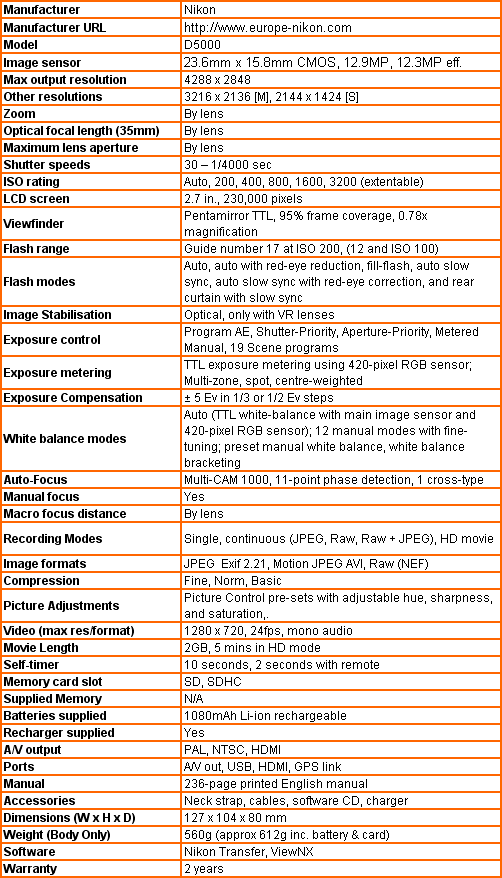
”Over the next few pages we show a range of test shots. On this page the full size image at the minimum and maximum ISO settings have been reduced to let you see the full image, and a series of full resolution crops have taken from original images at a range of ISO settings to show the overall image quality. These pictures were taken indoors using reflected natural light ”
—-
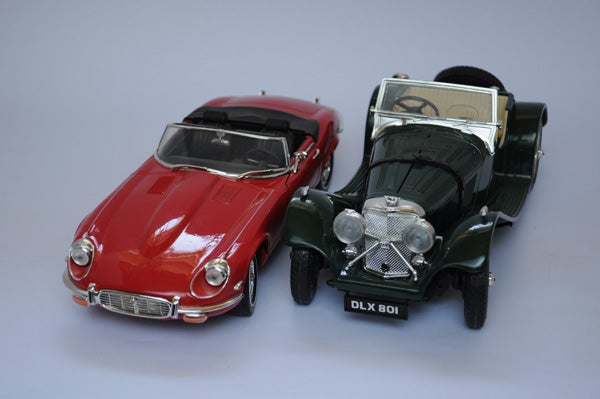
Despite mild under-exposure, this is the full frame at the minimum 200 ISO.
—-
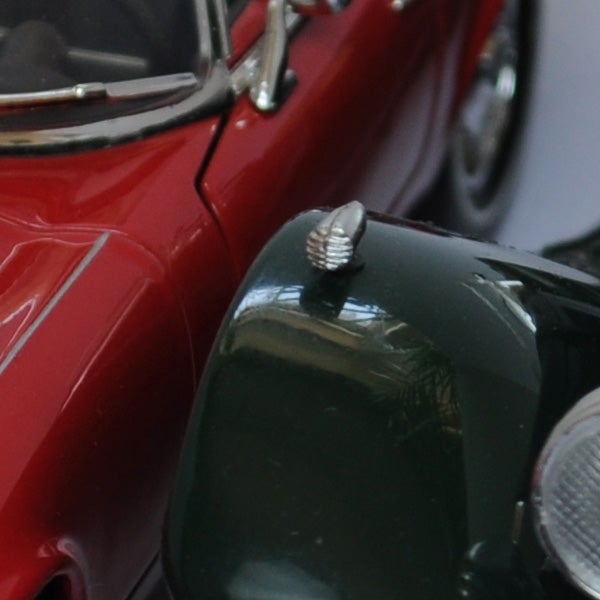
At the minimum ISO setting the image is clean and noise-free, if a little dark.
—-
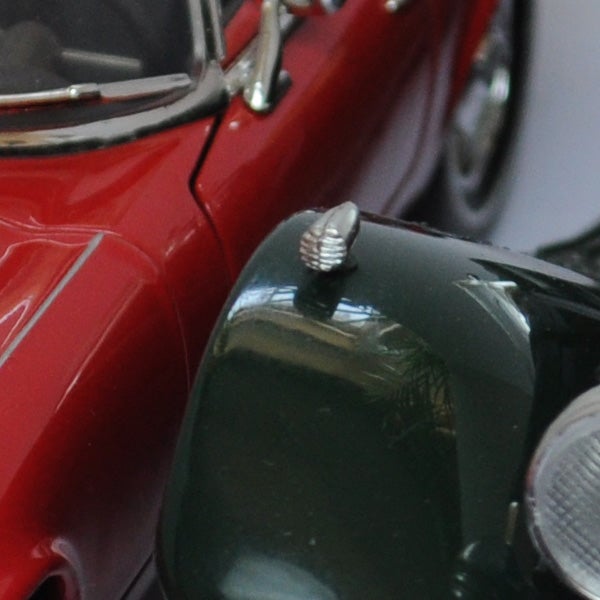
400 ISO and there are still no significant problems.
—-
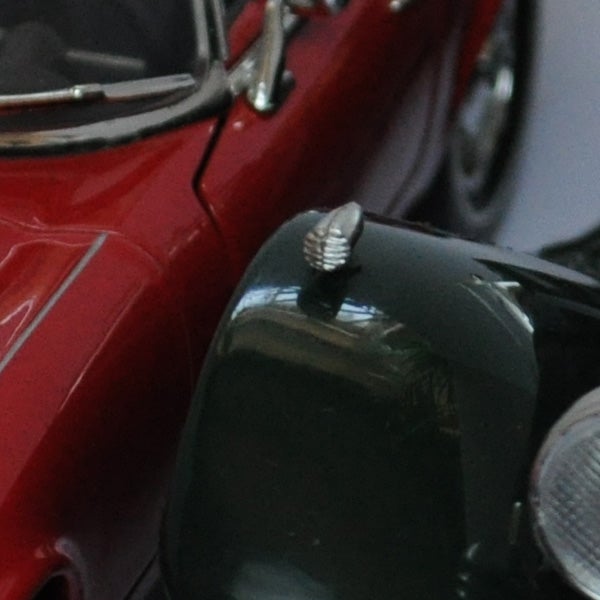
800 ISO and already noise is visible, and colour depth is reduced.
—-
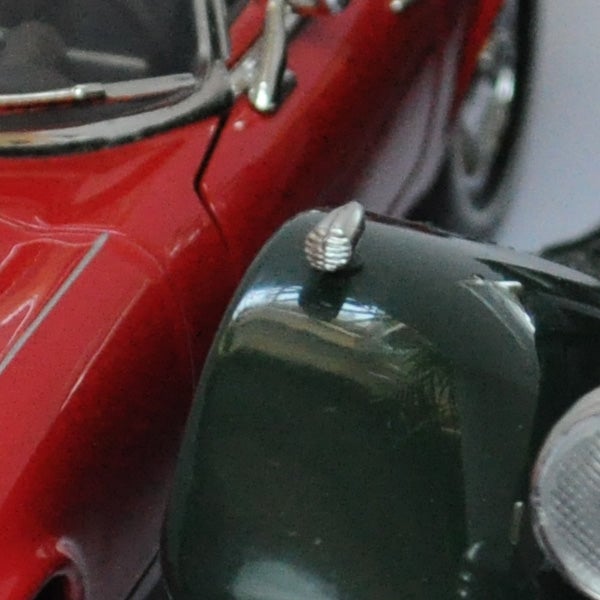
Exposure is slightly more accurate at 1600 ISO, but the red is very blotchy.
—-
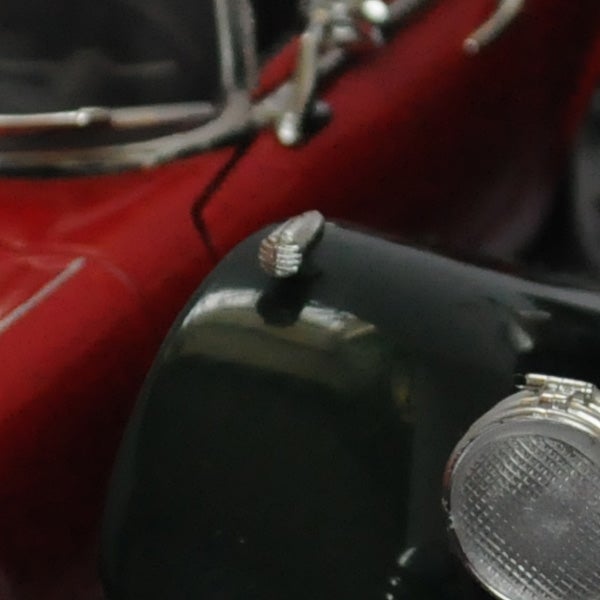
For comparison here’s the same shot with High ISO noise control turned to maximum. Unfortunately it’s under-exposed again.
—-
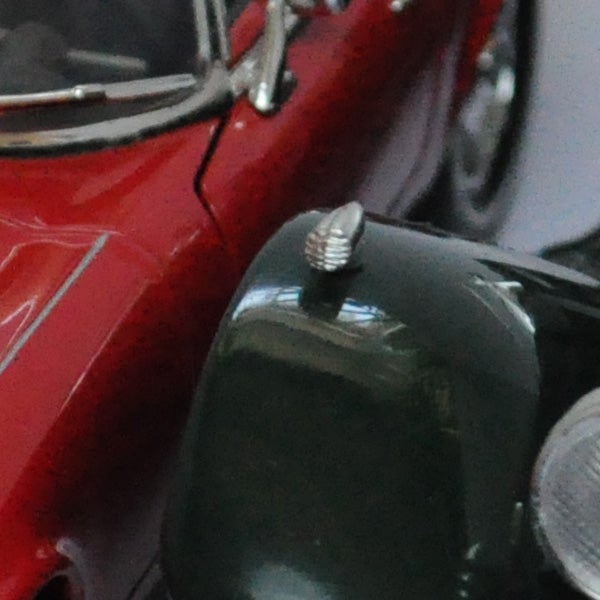
The maximum 3200 ISO, and there is a lot of noise all over the image.
—-
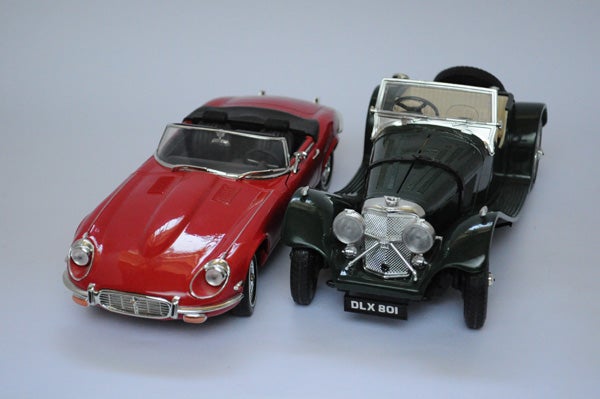
This is the full frame at 3200 ISO.
—-
”A range of general test shots are shown over the next two pages. In some cases, the full size image has been reduced for bandwidth purposes, and a crop taken from the original full resolution image has been placed below it to show the overall image quality. Some other pictures may be clicked to view the original full-size image. ”
—-

I still couldn’t get to Sidmouth, but here are some geese in mid-migration at Budleigh Salterton.
—-
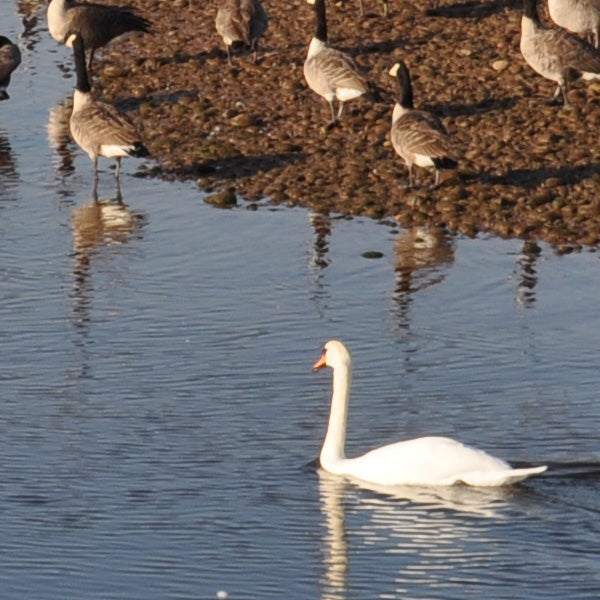
This is a 100% magnification crop from the image above.
—-
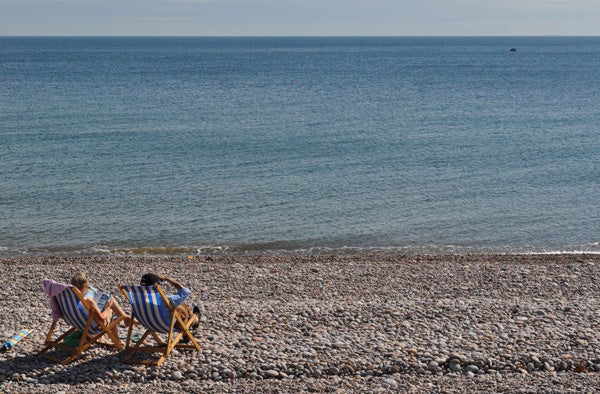
The horizon is completely flat despite the wide angle setting. The new AF-S 18-55mm G kit lens is very good.
—-

This is a crop from the corner of the image above. Corner sharpness is superb.
—-
”Here are some general test shots to help evaluate the camera’s overall image quality, including the zoom range of the lens. Some pictures may be clicked to download the full size original image. ”
—-
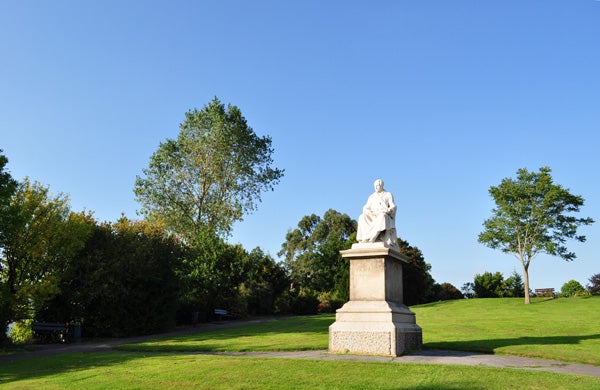
The wide angle end of the 18-55mm kit lens.
—-
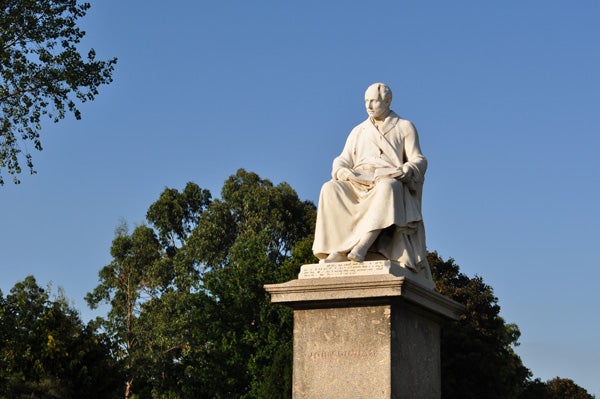
Zooming in from the same position, this is the 55mm end of the kit lens.
—-
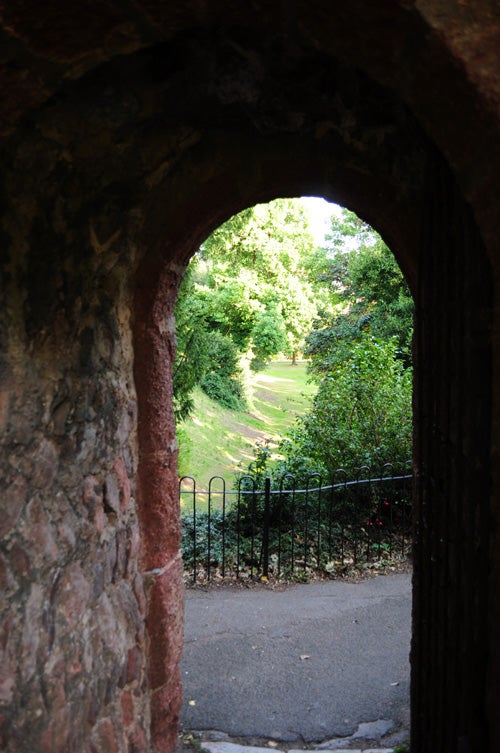
Here’s a shot taken with the Active D-Lighting feature switched off.
—-
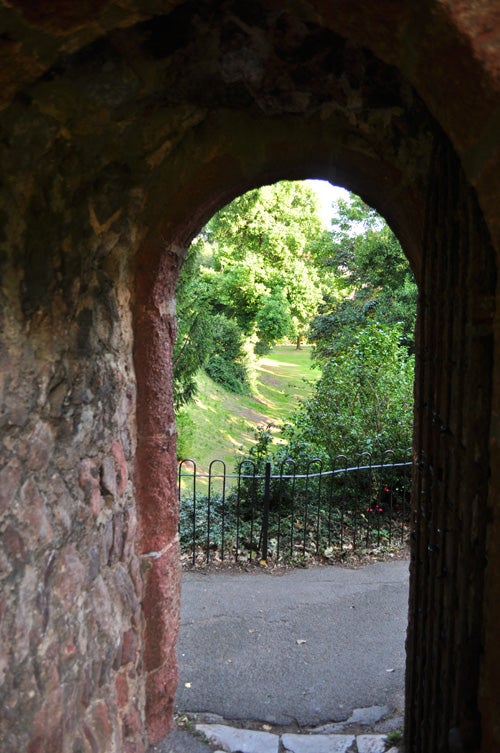
The same shot again, but with Active D-Lighting set to maximum. As you can see there is a a lot more shadow detail and less over-exposure in the highlights.
—-

In bright sunlight the colour rendition is superb.

